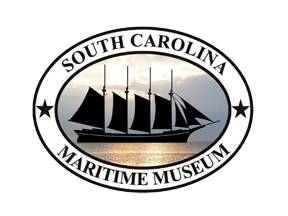Georgetown lighthouse lens returning home
by Debbie Merlo, for The Sun News, May 1, 2014
A piece of Georgetown’s history will be on display at 729 Front St. in Georgetown as early as June.
The Fresnel lens, a glass enclosure designed to concentrate light rays, was once an integral part of the Georgetown lighthouse and it is being brought home from Florida through the efforts of the South Carolina Maritime Museum and the U.S. Coast Guard.
Lighthouses, the lofty lookouts and beacons used for centuries to guide ships safely into port, were once equipped with lamps lit by whale oil. The light produced by the lamps reflected off the crystal prism glass of the Fresnel lens and was visible as far as 15 miles out to sea. The lens gets its name from its inventor, Augustin Fresnel, a French physicist.
“Thousands, not hundreds, of ships have used the lighthouse lens to guide them into Georgetown,” said Robert “Mac” McAlister, board member of the museum since 2011 and the chairperson for the acquisitions and exhibits committee.
McAlister, who has written three books on maritime history, including “The Lumber Boom of Coastal South Carolina” and “Wooden Ships on Winyah Bay,” explained the Georgetown lighthouse is still operating and is located on the uninhabited North Island near the mouth of the Winyah Bay and the entrance to the Atlantic Ocean.
Built in 1811, the 88-foot structure is the oldest lighthouse in South Carolina and is only accessible by boat. Before that, a wooden lighthouse was built in 1801 but it blew down in 1806, according to McAlister.
Working with McAlister and the South Carolina Maritime Museum is U.S. Coast Guard Petty Officer First Class David Browne, the officer in charge of Aids to Navigation.
“We fix lights and provide maintenance for the lighthouses,” said Browne, who is in charge of the station in Georgetown which provides services to the federally managed waters from North Carolina to the Isle of Palms in Charleston.
Browne compared what he does to days gone by, dubbing his duties as a “modern-age lighthouse keeper.”
Browne also explained the lenses were used up until the late 1800s, then were eventually replaced with rotating beacons which run off solar power and batteries, “similar to a car battery.”
The light that lit the way from inside the Georgetown lighthouse eventually wound up at the U.S. Coast Guard’s 7th District headquarters in Miami, where it’s been on display at their museum.
TBrowne is “a big advocate” of the homecoming.
“We want to share it with who it belongs and we’re excited to be able to do that,” he said.
However, in addition to the cost of around $10,000 to ensure the safe return of the lens, said McAlister, the South Carolina Maritime Museum had to petition the Coast Guard for the return with an application for approval.
The Coast Guard will cover some of the cost to get the lens back to South Carolina, but the museum is responsible for paying most of the cost.
The application requesting the return is known as a “long term loan” and is sent to a curator’s office for review and approval. The application must be reviewed, then approved by a curator, explained both McAlister and Browne.
Approval for the museum to have the Fresnel lens on loan took “somewhere around four to five months,” said Browne.
The loan of the lens – which remains government property – is good “for 10 years,” Browne said. “Then it has to be renewed every 10 years.”
Loan of the lens also comes contingent with stringent criteria that must be met prior to approval being granted:
- The museum must provide a minimum of $250,000 liability insurance.
- The lens must be displayed properly in an enclosed, protected space that will keep the lens from being touched by visitors.
- A historical placard must be visible to visitors.
McAlister said an enclosure is being built for the lens, which will be transported to South Carolina by an authorized vehicle and packed by Coast Guard-approved professionals.
“It’s packed and ready to go and should be here in (about) a month,” said McAlister.
Donations to assist the museum to offset the cost of the return of the Fresnel lens can be made by going to www.scmaritimemuseum.org or by calling the museum at 520-0111.
The museum is located at 729 Front St., Georgetown, and is open 11 a.m.-5 p.m. Mondays through Saturdays. Admission is free.
